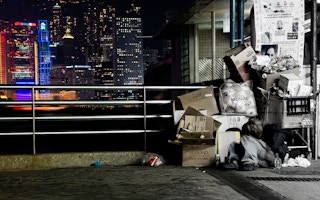As the summer thermometer soars, and the cities of the US Southwest are caught up in extremes of heat, the poorest people who live in the least prosperous districts may find their streets as much as 3°C hotter than those of the wealthiest 10 per cent.
And in Los Angeles, one of the richest cities in one of the richest states of the world’s richest nation, citizens in the most heavily Latin-American districts could be as much as 3.7°C hotter than their white, well-heeled neighbours.
Excess heat is linked to heat stroke, exhaustion, respiratory and cardiovascular problems and of course death: one US group has identified 27 ways in which heat can kill, and several sets of researchers have independently established that potentially lethal heat waves are becoming more likely, more extreme and more widespread.
Californian geographers report in the International Journal of Environmental Research and Public Health that they mapped summer temperatures in 20 urban centres in California, Nevada, Utah, Arizona, Colorado, New Mexico and Texas.
They looked at the data for median household income, and for ethnic origin, to identify the ratio of Black, Latin and Asian populations in each.
They also took into account education levels. And then they looked at satellite data for radiant and atmospheric temperatures on the warmest summer days and nights.
The greatest disparities in street temperature were in California. But on average the poorest 10 per cent of neighbourhoods in a conurbation would be 2.2°C hotter than the wealthiest 10 per cent both on average summer days and during extremes of heat.
There is a term for this: the inner city becomes a heat island. As global temperatures rise, crowded cities become increasingly inhospitable. Paved streets and car parks absorb and retain the sun’s radiation.
Ending ‘thermal inequity’
The suburbs and the high-amenity residential districts will have tree-lined streets, private gardens, parks, flower displays, lawns and even fountains or pools, all to help lower the local temperatures.
Using the constrained language favoured by science journals, the authors write: “The implication would be that programmes to increase vegetation within disadvantaged neighbourhoods and reduce or lighten pavements and rooftops could help reduce thermal disparities between neighbourhoods of different socio-economic characteristics.”
The researchers can hardly have been surprised by their own results: a look at published research had shown them that other groups have found evidence of what they call “thermal inequity” in Hong Kong, New York and Chicago, as well as in Santiago, Chile and in the crowded cities of Britain’s West Midlands.
“The study provides strong new evidence of climate impact disparities affecting disadvantaged communities, and of the need for proactive steps to reduce those risks,” said John Dialesandro, of the department of human ecology at the University of California Davis, who led the research. “There is a strong need for state and local governments to take action.”
This story was published with permission from Climate News Network.










